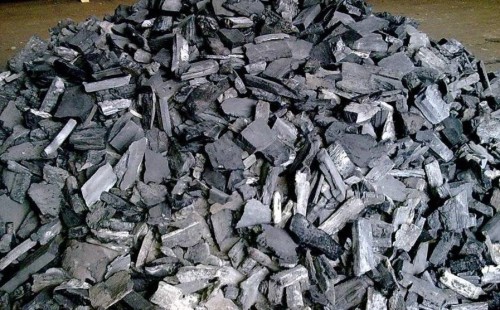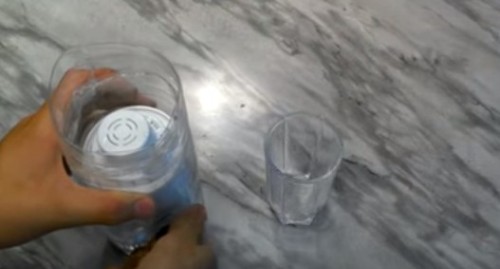A person cannot live for a long time without water. On the day of only one resident of the planet, an average of 2-2.5 liters of water accounts for an average of 2-2.5 liters. To always stay in shape and feel good, it is necessary to observe drinking mode. The water consumption must meet sanitary standards and be sure to be clean. Residents of megacities need to take care of the quality of water suitable for drinking. There are several options: to purchase a stationary water filter or install your own mini-cleaning station. Not everyone can solve this issue positively, so an excellent alternative is to make a water filter yourself.
Content
In the conditions of the city or in rural areas, there is always a risk that water will not be suitable for raw consumption. Even if it is clean, then making a long way, passes through dirty pipes, tanks and so on. If microbes and bacteria enter the tanks for storing water, then it is very difficult to get rid of them.
If you remember, back in Soviet times, special services notified the residents of all houses about water filtration. These days it was impossible to use water from the tap, because it had an unpleasant smell of chlorine. It was impossible to drink such water, except for a long time to defend and boil. In such periods, to disinfect the tanks, they used chlorine. She killed microbes, but could not cope with the main task - to cleanse water from extraneous impurities. Then the water purifiers were invented, which served as the basis for creating the first industrial filters.
To always get clean water from a tap, wells or from a well and drink it without fear, you can make a water filter yourself.
What is the filter intended for?
The filter is a special device that allows you to clean water from large and small extraneous impurities. Carrying cartridges do not cope at all 100% with their task, since small grains remain in water. To clean the water, it is necessary to use a modern filter. It cleanses water of small particles, heavy salts, metals, chlorine and pathogenic bacteria. As a result of proper processing, even ordinary raw raw water from the crane becomes harmless to humans.
Why is it necessary to filter water from a well? This question is asked by many rural residents. After all, before, no one thought about letting water out of the well through special devices. It was enough to dial a bucket of well water and use for its intended purpose. Now the situation has changed somewhat and not always well water can be consumed without fear, because it can be “found” in it a lot of harmful substances. These are heavy salts, bacteria, microorganisms, nitrates, nitrogen acids (irrigation and field processing), pesticides and other fertilizers. Part of these substances, when growing agricultural products, remains in the ground and seeps into the aquifers.
If you study this problem thoroughly, it becomes clear that cesspool, dung pits, as well as toilets, most often do not meet safety standards, so pathogens also fall into water. Drinking such water is not only unpleasant, but also very dangerous! Therefore, in order to prevent the spread of serious diseases, it is necessary to install a water filter. There are many different models on the market that differ in performance and principle of operation. The cost of such a device ranges from 200 thousand rubles (individual filter stations) in the range of 200 rubles (filter-worship).
If it is not possible to purchase a filter in the store, we offer a great option - make a water filter with your own hands.
Materials for water filters
The principle of operation of any filter device is the same - it is necessary that the water pass through the filtration material. It can be ordinary fabric, or gauze, folded in several layers, cotton wool, dense paper napkins, as well as grass, sand or coal.
For temporary purification of water, gauze, fabric, cotton wool or paper napkins are suitable. They perfectly purify the water, but at the same time they will not last long, since they will have to be often changed. If you need to build a temporary filter for water purification, then you can use these materials.
A more reliable and durable filter material is charcoal. You can get it yourself or purchase several bags in the store. The principle of building a home filter is simplicity: it is necessary to lay a layer of wood pure coal (preferably without extraneous impurities), a layer, sand, grass or gravel, then again a layer of coal and so on. As the top layer, you can use a special material - “Lutrail”, which is made of propylene fiber.
If you want to save, coal for the filter is easy to do yourself. To do this, you need to take wooden logs (clean, not painted with paint, varnish or staining) and relay in a metal pallet. Remember that conifers of wood for the construction of the filter are not suitable, since they have many essential oils.
How to make a water filter with your own hands
If we compare the classic inexpensive filter in the form of a reservoir, but you can find out that the capacity of such devices is small, only a few liters-only 1 person can use a filter, and a family of 2 or more people is not suitable for this option. There is another inconvenience when using - the receiving container is located above the second container, and a filter is inserted between them through which water seeps into the reservoir. We have to wait long for the water to clean and it can be used as intended. Let's take into account these shortcomings in the manufacture of a water filter.
We will need to build a filter:
- food plastic canister, with a capacity of 20 l;
- a collapsible water tap;
- thermic mesh;
- plastic bottle for 10 l;
- washer and threaded hairpin;
- a segment of a plastic pipe, with a diameter of 40 mm;
- charcoal;
- filter for inserting to the water supply.
How to make a water filter:
- For a receiving container, we use a plastic canister. It is necessary to insert a collapsible crane into the lower part of the canister. It can not be purchased, but unscrewed from a tetrapaket from a wine. This crane is very convenient for building a filter, if you press it - the liquid flows, release - the crane closes.
- At the bottom of the canister, you need to cut a small hole to insert the crane. It is best to plant it on thermocles.
- The initial capacity will serve as 10-l from the drinking water.
- It is necessary to cut out a pouring hole with a sharp knife in the container.
- The neck of the canistra and the containers of the bottle should match the diameter, so nothing needs to be fixed additionally. The neck "sits" in the hole very tightly.
- As a filter element, we take a ready -made filter that is used for inserting into existing water supply networks. It is installed in the inner part of the canister, since the element itself does not pass through the neck.
- In order for the filter to “sit” tightly in the container, it must be pressed with a washer (drill a hole in the lower part) and studs.
- We connect all the components together and test the home -made filter. You can do otherwise and instead of the finished filter to make a cartridge made of wood coal yourself. To do this, you will need a segment of the pipe in which it is necessary to put charcoal, connect the pipe to the neck and fix the home -made filter using a thermocleys. As a gasket, you can put a napkin or a fabric or gauze folded in several layers on the bottom.
- In order for the coal to remain inside the pipe, the reverse end also needs to be closed with a napkin and securely fixed.
- Now we insert the filter into the neck of the bottle and put it on top of the canister. You will get a large filter.
- We test our home -made cartridge. Pour 5 liters of water into the tank, this is enough to “pump” the coal filter. See what water will be, it will flow muddy, with small particles of coal - this is normal. The next time the water will become clean.
The performance of such a handmade filter is approximately 3 liters per hour. If you fill out a home -made filter in the evening, then in the morning you can use clean water. This is very convenient, since you do not need to wait for it to be cleaned. You will always have a decent water supply for a day. About 15 liters, and this is a lot. By the way, the water does not stagnate, and a bag of charcoal is enough for several years.
The dimensions of water filters can be different. If you need to quickly clean a little water, then you can make another cartridge using a purchased filter. So you can save on the purchase of a jug, especially if you often have to move from one place to another. A homemade filter will help out on business trips, on vacation, in the country.
For the manufacture of the filter, it is necessary to prepare the following:
- filter;
- plastic bottle for 2 l.;
- scissors.
Stages of creating a water filter:
- With scissors, you need to cut the bottle into 2 parts. The upper cone -shaped part will remain with the lid.
- Next, the lower part of the filter must be inserted into the first part of the bottle (with a neck) so that the filter “sits” very tightly. So you can decide where you need to cut off a high part (neck). Cut with scissors along the intended line. Now you have 3 parts of a plastic bottle plus filter. We do not need the upper part of the bottle with a lid.
- We assemble a water filter: in the upper part of the bottle (middle), install a filter, a narrow side down.
- We insert this design into the cone -shaped part of the bottle and press it well.
- Everything, the filter for water purification is ready, it remains to test the device by pouring a little water.
The next version of a home -made cartridge for water purification is more interesting, since we will completely make not only the water tank, but also the filter itself.
To do this, prepare the following:
- water canister (capacity 5 or 10 l);
- 3-l glass bottle;
- small river sand;
- wood or activated carbon;
- gauze or cotton wool (you can take fabric).
How to make a filter yourself:
- Cut the bottom of the plastic bottle. In the lid, we make a hole with a red -hot awl.
- We turn the bottle with a neck down and lay the filter elements in this sequence: first fabric, gauze or cotton wool, then charcoal and the last layer - river sand.
- In this position without turning, we insert our home -made filter into the neck of a glass jar.
- Now you can check how the filter works. To do this, fill it with water (you can cover the home -made device with a cut bottom) and wait for it to go through sand, coal and fabric. We try water and enjoy its taste.
In the same way, you can make a large installation for filtering water from the tank or well.
We offer to see another version of the construction of a mini-filter with your own hands:













